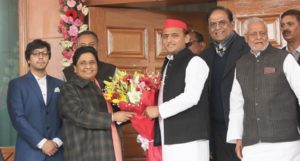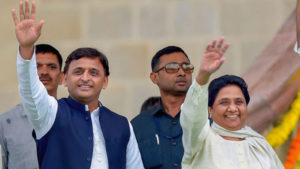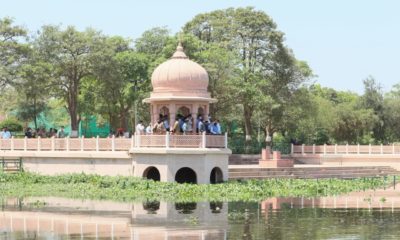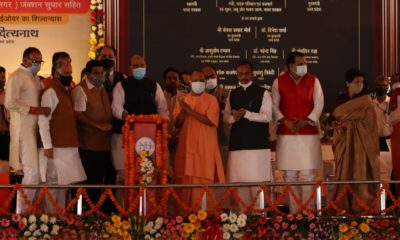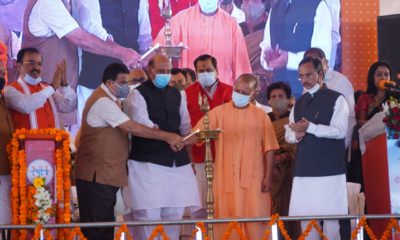Feature
In past two decades SP, BSP never able to win these 11 Lok Sabha seats of Uttar Pradesh
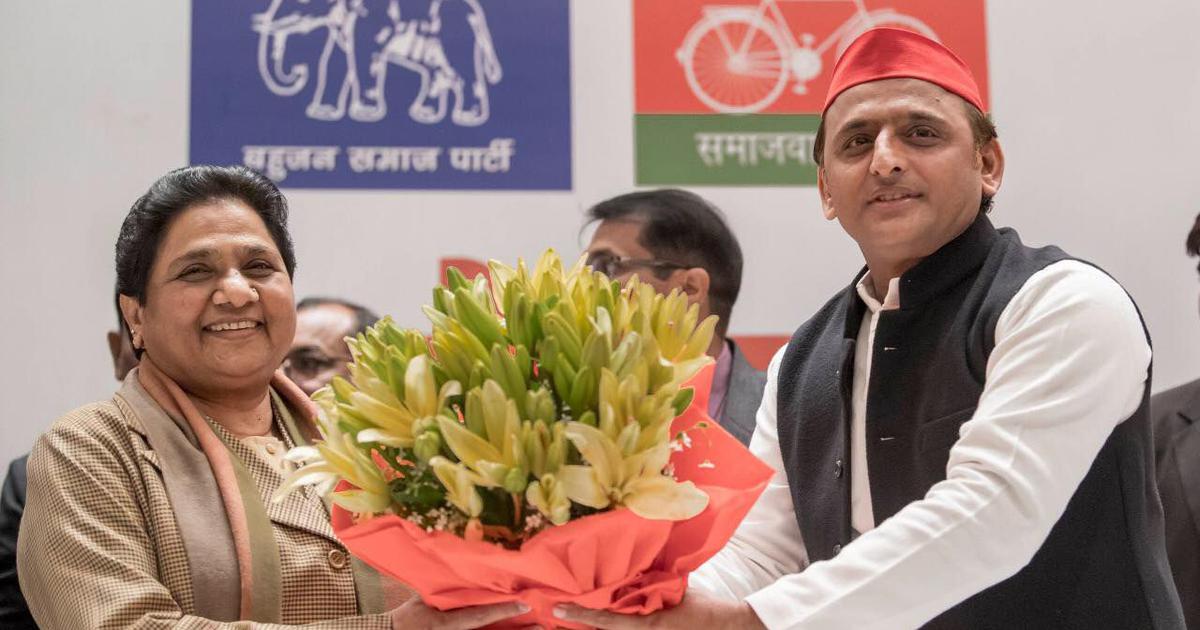
Lucknow: In the past two decades, Samajwadi Party and Bahujan Samaj Party have failed to win 11 parliamentary seats of Uttar Pradesh, including state capital Lucknow, Varanasi, and Congress bastions of Amethi and Raebareilly.
Besides, the two parties could not win in Baghpat, Bareilly, Pilibhit, Kanpur, Mathura, Hathras and Kushinagar.
However, relying on caste arithmetic, SP and BSP in alliance with RJD is striving hard to get maximum number of seats in the state which sends 80 MPs.
After the alliance, both parties left Raebareilly and Amethi for UPA Chairperson Sonia Gandhi and Congress President Rahul Gandhi respectively, while on Baghpat and Mathura RLD is contesting and on the rest of the seven seats SP candidates are in fray.
The Lucknow seat on which the alliance is still indecisive and has not fielded its candidate yet, is BJP’s stronghold.
In 1998, 1999 and 2004 the seat was held by former prime minister late Atal Bihari Vajpayee while in 2009 and 2014, the BJP’s Lalji Tondon and Home minister Rajnath Singh had won the seat.
Similar is the scenario in Kanpur seat, which was held by Congress’ Sriprakash Jaiswal between 1999-2009 and BJP’s Murli Manohar Joshi in 2014.
Jaiswal is challenged by BJP candidate and state minister Satyadev Pachauri while SP has fielded Ram Kumar as its candidate this time.
Varanasi, presently held by Prime Minister Narendra Modi, was won by the BJP’s Murli Manohar Joshi in 2009 while in 2004 it was won by Rajesh Kumar Mishra of Congress and the BJP’s Shankar Prasad Jaiswal in 1999.
In Baghpat and Mathura too SP, BSP could not win but in alliance with the RJD, the result may differ this time.
RLD’s Jayant Chowdhury is in fray from Baghpat against BJP’s Satyapal Singh while in Mathura, RLD’s Kunwar Narendra Singh is challening BJP’s Hema Malini.
SP, Bahujan Samaj Party in past two decades never win these 11 parliamentary seats of UP:
The same pattern is seen in Pilibhit which is held by BJP since 1999.
While Union minister Maneka Gandhi won the seat in 1999, 2004 and 2014, the seat was with her son Varun Gandhi in 2009, who is once again in fray and is challenged by SP’s Hemraj Verma this time.
In Bareilly seat also BJP’s candidate and Union Minister Santosh Gangwar is winning continuously since 1999 except in 2009 when he lost to Congress candidate Praveen Singh Aron.
Gangwar is once again in the fray and is being challenged by SP’s Bhagwat Sharan Gangwar, minister in previous Akhilesh Yadav government.
Hathras and Kushinagar were also not won by both the parties in the past two decades.
When asked why SP-BSP could not succeed in these constituencies in past two decades, SP leader and MLC Rajpal Kashyap said, “Nothing can be termed permanent in politics. Situations keep changing. In this LS polls, its the time of alliance and our candidates will win as the situation has changed”.
“This time people of the state want to change this ‘jumlebaz’ (gimmick) government at the Centre. Also, as the SP and BSP are contesting together there is no confusion in minds of the people and they will be voting for us to root out the BJP government,” Kashyap said.
In the 2014 Lok Sabha polls, the SP had won five seats, while the BSP failed to win any seat. In the 2017 assembly polls, SP and BSP got 22 per cent votes each.
“In the politically-crucial Uttar Pradesh, there are about 22 per cent Dalits, 45 per cent OBCs and 19 per cent Muslims, whose vote share will be decisive in the general elections this year,” political analyst JP Shukla said.
If both the parties continue to have a say in their traditional vote banks, the combine can create hurdles for the BJP in the LS polls, he added.
Entertainment
Meghalaya Reserves Legalized Gambling and Sports Betting for Tourists

The State Scores Extra High on Gaming-Friendly Industry Index
Meghalaya scored 92.85 out of 100 possible points in a Gaming Industry Index and proved to be India’s most gaming-friendly state following its recent profound legislation changes over the field allowing land-based and online gaming, including games of chance, under a licensing regime.
The index by the UK India Business Council (UKIBC) uses a scale of 0 to 100 to measure the level of legalisation on gambling and betting achieved by a state based on the scores over a set of seven different games – lottery, horse racing, betting on sports, poker, rummy, casino and fantasy sports
Starting from February last year, Meghalaya became the third state in India’s northeast to legalise gambling and betting after Sikkim and Nagaland. After consultations with the UKIBC, the state proceeded with the adoption of the Meghalaya Regulation of Gaming Act, 2021 and the nullification of the Meghalaya Prevention of Gambling Act, 1970. Subsequently in December, the Meghalaya Regulation of Gaming Rules, 2021 were notified and came into force.
All for the Tourists
The move to legalise and license various forms of offline and online betting and gambling in Meghalaya is aimed at boosting tourism and creating jobs, and altogether raising taxation revenues for the northeastern state. At the same time, the opportunities to bet and gamble legally will be reserved only for tourists and visitors.
“We came out with a Gaming Act and subsequently framed the Regulation of Gaming Rules, 2021. The government will accordingly issue licenses to operate games of skill and chance, both online and offline,” said James P. K. Sangma, Meghalaya State Law and Taxation Minister speaking in the capital city of Shillong. “But the legalized gambling and gaming will only be for tourists and not residents of Meghalaya,” he continued.
To be allowed to play, tourists and people visiting the state for work or business purposes will have to prove their non-resident status by presenting appropriate documents, in a process similar to a bank KYC (Know Your Customer) procedure.
Meghalaya Reaches Out to a Vast Market
With 140 millions of people in India estimated to bet regularly on sports, and a total of 370 million desi bettors around prominent sporting events, as per data from one of the latest reports by Esse N Videri, Meghalaya is set to reach out and take a piece of a vast market.
Estimates on the financial value of India’s sports betting market, combined across all types of offline channels and online sports and cricket predictions and betting platforms, speak about amounts between $130 and $150 billion (roughly between ₹9.7 and ₹11.5 lakh crore).
Andhra Pradesh, Telangana and Delhi are shown to deliver the highest number of bettors and Meghalaya can count on substantial tourists flow from their betting circles. The sports betting communities of Karnataka, Maharashtra, Uttar Pradesh and Haryana are also not to be underestimated.
Among the sports, cricket is most popular, registering 68 percent of the total bet count analyzed by Esse N Videri. Football takes second position with 11 percent of the bets, followed by betting on FIFA at 7 percent and on eCricket at 5 percent. The last position in the Top 5 of popular sports for betting in India is taken by tennis with 3 percent of the bet count.
Local Citizens will Still have Their Teer Betting
Meghalaya residents will still be permitted to participate in teer betting over arrow-shooting results. Teer is a traditional method of gambling, somewhat similar to a lottery draw, and held under the rules of the Meghalaya Regulation of the Game of Arrow Shooting and the Sale of Teer Tickets Act, 2018.
Teer includes bettors wagering on the number of arrows that reach the target which is placed about 50 meters away from a team of 20 archers positioned in a semicircle.
The archers shoot volleys of arrows at the target for ten minutes, and players place their bets choosing a number between 0 and 99 trying to guess the last two digits of the number of arrows that successfully pierce the target.
If, for example, the number of hits is 256, anyone who has bet on 56 wins an amount eight times bigger than their wager.

